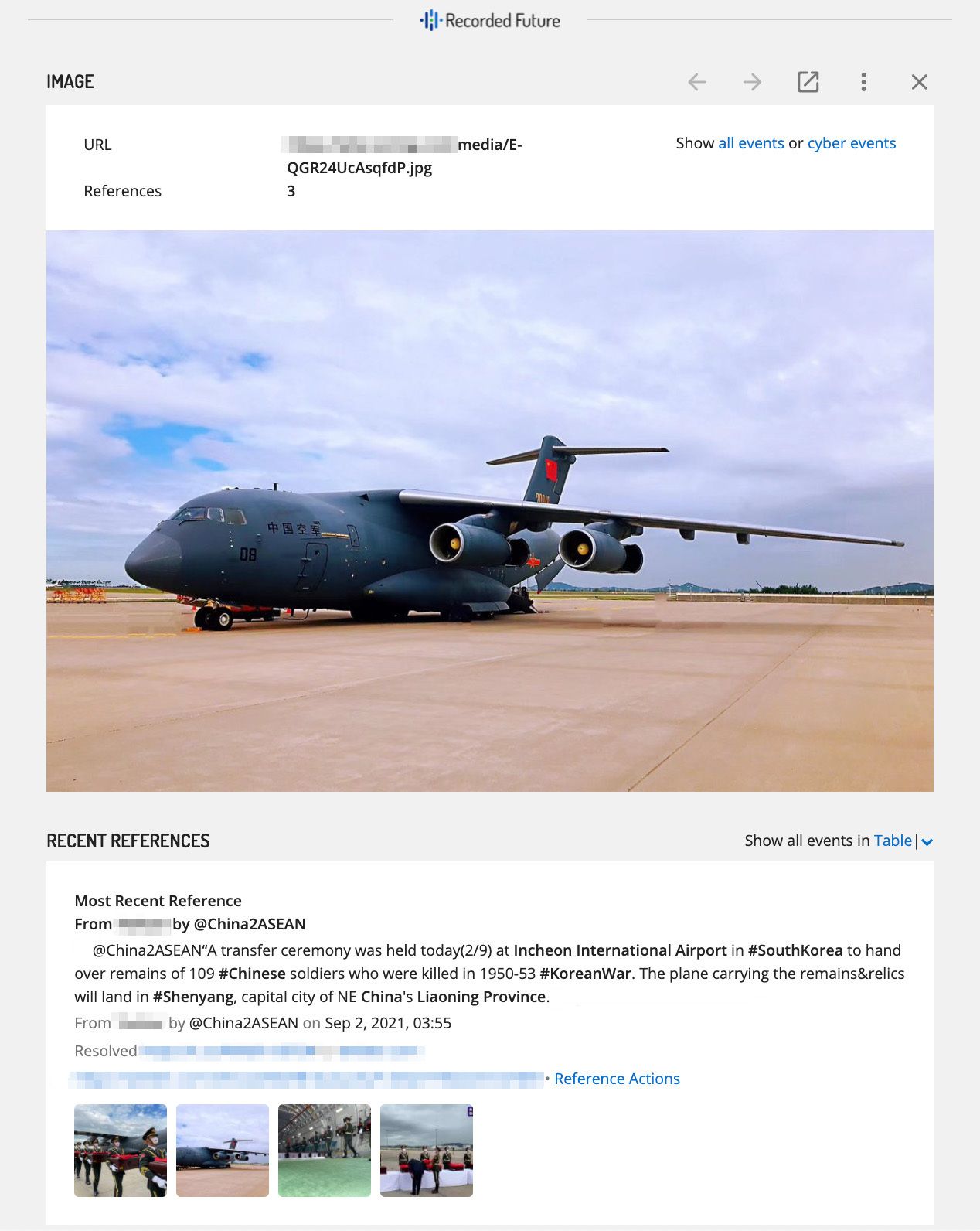How Many Words is a Picture Actually Worth? What Images Mean in Intelligence Analysis

In intelligence analysis, a picture is worth a thousand words… but could it be worth even more? Traditionally, intelligence analysis has been text-centric. Intelligence analysts in the private and public sector spend hours collecting and reading documents, social media posts, news sites, classified reporting, and more all to get a full picture of what is happening with the topic or event they are digging into. While text has and will always give powerful insights for analysts, they can often gain more insights from images or images married with text, and understand the broader picture (no pun intended!) of what’s happening.
Images in intelligence analysis aren’t new. In fact, there’s a whole subset of intelligence analysis called IMINT or “imagery intelligence” which by definition “includes representations of objects reproduced electronically or by optical means on film, electronic display devices, or other media.” Imagery can be derived from visual photography, radar sensors, infrared sensors, lasers, and electro-optics. IMINT and its counterpart, GEOINT (Geospatial Intelligence) are primarily focused on analyzing overhead images collected by satellite, plane, or unmanned aerial vehicle (UAV). This type of analysis is great for analyzing trends over time by comparing multiple images of the same location, looking deeper at a new area of interest, real or near real-time tracking of military movements, or even for various private sector use cases like monitoring high-risk areas for natural or man-made disasters, looking at how certain crops are performing, understanding progress on construction projects, or having a visual inventory of business locations.
While analysts used to have to rely on the various sources and methods I mentioned above for image collection, today the primary source of images are humans, or better said, literally anyone with a phone. If you look at popular social media sites, you can understand just how many images are out there to collect and analyze. On Instagram alone, 1,074 photos are uploaded every second. So if you think about it, as you just read this sentence over 1,000 pictures were uploaded. Everyone has a camera in their pocket and use it nearly daily to snap pictures of all sorts of things. We use images to communicate with each other, to keep people informed, to show off, make a point, or simply because we don’t feel like typing. What this means for intelligence analysis is that there are countless valuable images that are often able to shed light on events and topics, in a quicker, higher context manner, than what can be derived from text only.
To look at images through an intelligence analysis lens let’s look at some benefits of analyzing images or pairing images and text together for analysis.
- Context - Images can provide deeper context than text. The story an image tells could be far different than what text is saying which is very useful in disinformation and geopolitical research
- Research efficiency - confirm that you are searching the right things and give you the ability to direct queries by understanding if the images reflect what you are looking for
- Confirmation- Images can confirm or deny text-based intelligence
- Easy to analyze - Images themselves don’t require translation and are easy to analyze and assess
As we introduced images into the Recorded Future platform we instantly saw all of these benefits in action. Analysts are now able to not only get insight from our real-time text based intelligence from sources across the open web, technical sites, and the dark web, but can expand their analytic scope by viewing and analyzing images from social media and other open source intelligence sources, for example, which adds another important dimension of intelligence to support their daily activities as well as their overall missions.
A couple examples of this is when looking at phishing campaigns targeting the financial industry, a threat intelligence analyst can see mentions and descriptions of the phishing campaigns with the text included in the campaign but is able to see how the phishing email looks, how it’s structured, and other identifiers to be on the lookout for. Or, when researching various CVEs the same analyst can identify indicators through our text based collection but can also see screenshots of indicators of the CVE in the wild to further inform the SOC of additional indicators to be on guard for.

From the geopolitical intelligence side, a global security analyst is able to further understand the extent of a physical security concern around a location of interest. While the text-based indicators mentioned there was possible concerning activity, the images can confirm or deny the actual presence of potential security concerns. Or for an all source analyst in the government looking into foreign military activity around the world, the ability to view and analyze images can help identify all sorts of additional elements of what’s actually happening on the ground versus what is being said about it.


These are just a few of the use cases where image collection and analysis in the Recorded Future Platform immediately increased the value of the research being conducted. Come see for yourself how you can get the full story with images and text-based intelligence from Recorded Future today!
Interested in seeing how this feature works in the Recorded Future Platform? Request a demo!
Related